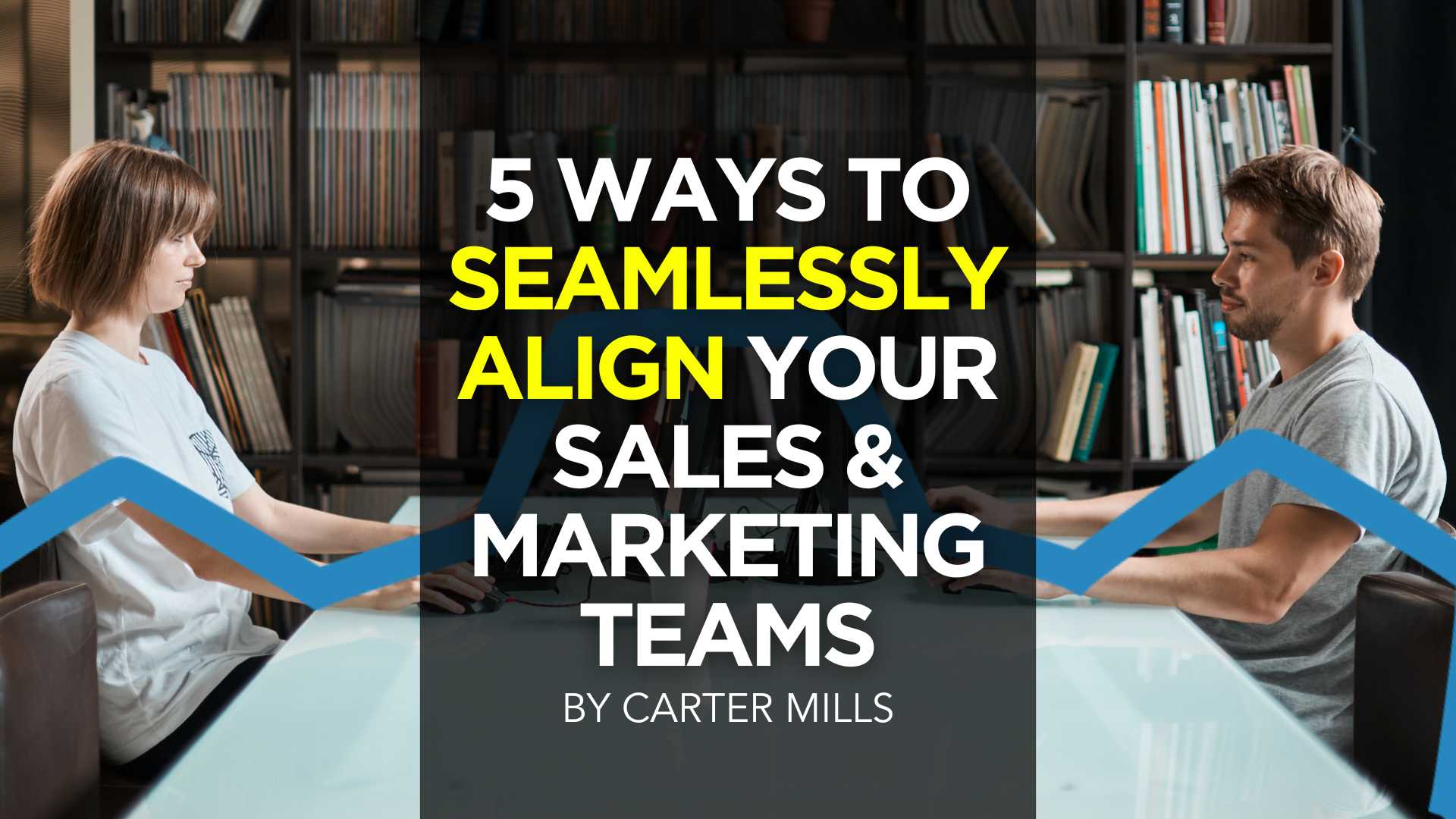MARKETING
5 Ways To Seamlessly Align Your Sales & Marketing Teams

Did you know that misaligned teams can cost businesses trillions of dollars each year? Yes, you read that right.
When sales and marketing teams don’t work together cohesively, it’s sort of like having a pilot and a copilot that don’t communicate—it becomes difficult to accomplish goals and stay on the right course!
Although the key to well-aligned sales and marketing teams lies in communication, that’s not the only way to keep these two departments working together.
Here are five ways to seamlessly align your sales and marketing teams in order to achieve business objectives.
1. Make a Plan Involving Both Teams
Roughly 48% of leaders spend less than a day on strategic planning for their projects. The trouble here is that with so little planning, it’s hard for companies to iron out the details and get both sales and marketing teams aligned. As a result, it’s difficult for teams to bring those plans to fruition.
When you utilize strategic planning that involves both teams, you can drive success by:
- Creating a single vision that aligns your stakeholders and the entire company
- Justifying your reasoning and avoiding biases and flaws
- Tracking your brand’s progress because of shared and more specific goals
What should the plan constitute? More than a schedule of your upcoming marketing activities – it should also outline your future sales promotions.
Planning should always be a two-way street, and communication is key. Both departments need to share their goals and benchmarks so that they can be on the same page.
One way to achieve this is to ensure your marketing team is up to date with how your sales team is performing and whether or not they’re meeting company goals. This can help show marketing if their strategies are actually working or if it’s time for adjustments.
2. Get Management Involved
A lack of upper management involvement can cause a whole slew of problems in your business, such as low productivity and getting past tough hurdles. To make sure your marketing and sales teams are successful, it’s crucial to have upper management of both teams working together. That way, both teams can complement each other’s goals:
- The marketing team can look for potential leads to boost sales
- The sales team can help marketing understand buyer personas and adjust the team’s marketing campaigns
- Effective marketing strategies can also help cold leads become sure buyers
In addition, team members can get inspired watching their leaders work together cohesively. This can lead to better inter-team collaboration overall.

Get the Digital Marketing Blueprint…
With a Customer Value Journey that strategically builds a relationship with new prospects and converts them into loyal, repeat customers. Click here
3. Focus on Updates and Sharing Experiences
It’s a fact that the marketing team has a bunch of ideas the sales team don’t, and vice versa. This is where continued education becomes essential. In fact, you’ll be surprised at what sales and marketing can learn from each other.
For instance, the sales team can first-hand teach marketing about what potential customers want in marketing campaigns. At the same time, they can also give insights into how customers respond to different approaches. They can provide statistics and reports to help optimize and improve the campaigns to achieve better results.
By showing which strategies lead to more sales, they can help the marketing team hone in on strategies that work, helping save time and resources.
On the other hand, the marketing team can teach sales about the importance of CRM through email marketing and creating upcoming scheduled content plans.
4. Optimize Your Outreach Channels
Utilizing the right outreach strategies can help improve your company’s inbound and outbound marketing. And in return, it can boost sales and achieve your business goals in no time.
You should optimize your outreach channels by following this step-by-step framework:
- Determine who your target market is. Who are your buyer personas, and how can you address their needs?
- Always be engaging. There’s a reason why your company has sales representatives. They should be responsible for constantly being in touch with potential leads and checking for follow-ups.
- Prioritize how your target leads feel. Recognize their emotions and base your approach on that to win them over.
Sequencing automation tools, such as drip email campaigns is also important. And with proper automation, you can reach your potential customers at the right time.
5. Get the Right Tools
59% of marketers believe that technology has a huge impact on their marketing strategy. Hence, it’s essential that brands take advantage of these online tools to achieve their overall sales and marketing goals.
Moreover, technology allows you to keep track of your company’s KPIs and metrics, such as new leads or first-time purchases, which could help both teams generate ways to improve and work on the strategies.
Final Thoughts
Getting your marketing and sales teams to work together can be easier than you might think at first glance. By getting upper management on board and creating a joint plan, you can set the stage for successful teamwork.
From there, focusing on good communication, strong supporting tools, and continued education of both teams is what will ultimately lead to well-aligned marketing and sales departments.
Once these teams are aligned, you can start spenging less time micromanaging and more time focusing on a bigger picture for your business.



















You must be logged in to post a comment Login